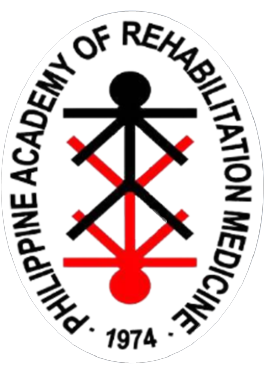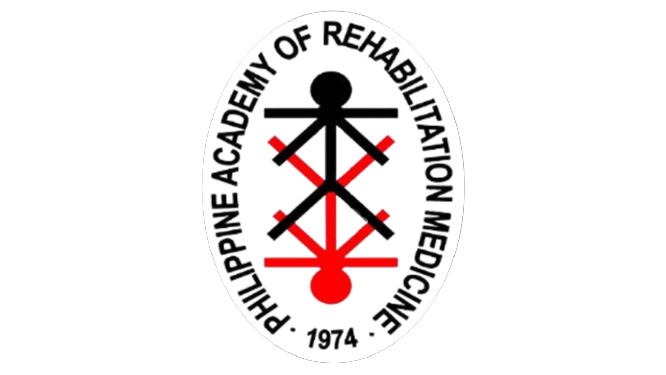PARM VISAYAS:
COUNCIL TO CHAPTER
Minda Marie S. Cabrera, MD, FPARM
I. Historical Background
That PARM Visayas is now a full-pledged Chapter of the Academy is no accident. It is noteworthy that the PARM presence in the Visayas can be traced as far back as a few years after PARM itself was established.
Dr. Jose Soriano, the first graduate of the STUH-WRF Fellowship training program for Southeast Asia established the first medical rehabilitation center in Iloilo City, the first in the Visayas in 1977. Shortly thereafter, Dr. Primitivo Cammayo, the pioneer graduate of the UP-PGH Rehabilitation Medicine residency training program began his work in Bacolod City, Negros Occidental by successfully implementing the community-based rehabilitation services (CBRS) according to the WHO model. The CBRS which is now supervised under the able hands of Dr. Andrew Sanchez became Dr. Cammayo’s lasting gift for the people of Negros Occidental. In Cebu City, Dr. Arthur Malgapo and Dr. Mary Jeanne Flordelis, both WRF Fellows became the leading physiatrists in Central Visayas.
For the pioneer physiatrists, promoting the vital role of Rehabilitation Medicine in the entire spectrum of medical care for the first time was a daunting task. Despite being outnumbered, these forerunners in the Visayas made their presence felt by engaging in relevant activities in their local medical societies as well as lobbying for the subject to be included in the medical curriculum of the local medical schools. They became recognized leaders in their respective medical communities, served as role models for many young medical students, physical therapists and allied professional and were able to establish important linkages with the organizations of PWDs in the region. Armed with sound clinical practice, strong advocacy in preventing and managing disability in the acute and chronic care setting, and a knack for teaching, they have opened the eyes of fellow medical practitioners, and lay people on the importance of Rehabilitation Medicine.
The palpable presence of physiatrists in the Visayas working in the key cities of Iloilo, Bacolod and Cebu not only changed the landscape of medical practice in the region by offering hope to patients with acute and chronic disabilities. Their presence opened a whole new way of looking at PWDs in the community and inspired many graduates of Medicine to pursue residency training in the various training centers in Manila.
The Visayas, situated in central Philippines and politically divided into three major island groups, the Eastern, Western and Central Visayas, is home to 7 million Filipinos of diverse ethnic origins but united under a distinct and unique cultural background. The increasing number of persons needing rehabilitation services in these areas prompted the physiatrists in the region to form clusters, notably the Cebu and Iloilo-Bacolod-based clusters. Through these informal clusters, the PARM programs began to spread.
My election as Member-at-Large in 2003 provided me the singular opportunity to harness the dynamic energies of the Visayas contingents. With the encouragement and avid support of our senior physiatrists, we held our first ever scientific and business meeting in Iloilo on May 1, 2003. This landmark meeting provided the impetus in uniting all the physiatrists in the Visayas in pursuit of the PARM vision. This was followed by regular meetings which served as a venue for continuing education, fellowship, discussion of practice issues, planning of activities and strengthening of advocacies which were attuned to the specific needs of the region.
In 2005, the PARM Visayas Council was formally inducted and recognized by PARM during the Annual Convention held at Fort Ilocanda in Ilocos Norte. Shortly thereafter, it launched its maiden issue of the PARM Vision newsletter. Through its succession of dynamic leaders, specifically during the term of Dr. Renald Peter Ramiro, the PARM Visayas made important strides in promoting Rehabilitation Medicine, and became instrumental in gaining for the Academy the PMA Award for Specialty Society with the Most Outstanding Project through the PARM MOVE, a PARM Vis initiative which has been adopted by the national organization as a continuing advocacy.
I feel grateful and privileged to rise from the ranks in the Visayas and eventually having been accorded a chance to serve PARM as its president from 2010 to 2011. Through the various committees in PARM, we instituted meaningful changes which included amendments to our 1986 Constitution. The specific amendment now clearly defines Councils and Chapters. Clinical Councils ensure the growth of the specialty in specific clinical areas, while Chapters are branches of PARM that implement its various programs at the regional level.
At the closure of my term, it was but fitting that PARM Visayas became the first Regional Chapter of the Academy.
[devvn_ihotspot id="2330"]
II. Council to Chapter
Whether the issue is a matter of nomenclature or of a more profound concern, it is now considered moot and academic. From the beginning, PARM Vis as a collegial body has functioned as a branch of PARM in the Visayas. The Council Chairman now renamed as Chapter President represents the region as Member-at-Large in the PARM Executive Board, and is responsible for cascading all relevant information, programs and projects of the national organization to its members, and conversely provides an annual report of the region’s activities.
The Chapter President is now considered equal to his respective counterpart in the other medical specialties in the locality as opposed to being mistaken as a chairman of a committee. In close coordination with the PARM Executive Board, he is empowered to communicate officially on behalf of the Chapter on matters of national as well as regional importance.
III. Quo Vadis, PARM Vis?
The best way to describe a successful organization is stated in this quote by James Cash Penney. “The five separate fingers are five independent units. Close them and the fist multiplies strength. This is organization.”
As a fully recognized Chapter, PARM Vis faces a vast arena of challenges. Strength however, is not everything in any organization. Obviously, the use of strength without direction and purpose is futile. Moreover, many organizations fail after the being caught in the monotony of routine activities. The enthusiasm is often lost after controversies have died down and conflicts have been ironed out. Much is still to be done in the areas of continuing education, advocacy, and research. If PARM Vis must go beyond what it has done so far, the answer lies in a visionary and transformational leadership that will continue to motivate and inspire the members with the same passion as when we started. Likewise, we need the renewed commitment and the stamina of the members to propel the Chapter to a new era of development. PARM Vis must evolve and continually aim for advancement according to its Vision- Mission.








